Every time you slide behind the wheel, ready to hit the open road, there's an unspoken trust between you and your vehicle. You trust it to get you to your destination safely and it trusts you to have kept it in optimal condition. But how often do we pause to ensure our trusty ride is indeed ready for the journey?
Especially for those in Coolum and Coolum Beach, where holiday makers often set out for long drives, ensuring your vehicle is in top shape is paramount. Let's dive into the essential checks you should be making before hitting the road.
Table of Contents:
- Tyre Tread and Pressure: The Road Grip Essentials
- Fluid Levels: Keeping Your Engine Smooth and Responsive
- Brakes and Brake Pads: Your Primary Safety Measure
- Lights and Indicators: Communicating on the Road
- Battery Health: The Heartbeat of Your Vehicle
- Emergency Toolkit: Prepared for the Unexpected
Tyre Tread and Pressure: The Road Grip Essentials
The grip your tyres provide is crucial for safe driving. Regularly checking the tread depth ensures you're not driving on bald tyres, which can be hazardous, especially in wet conditions.
- Optimal Tread Depth: Essential for preventing hydroplaning on wet roads.
- Air Pressure: Ensures even tyre wear and optimal fuel efficiency.
Checking tyre pressure isn't just about ensuring a smooth ride; it's about safety, fuel efficiency and prolonging the life of your tyres.
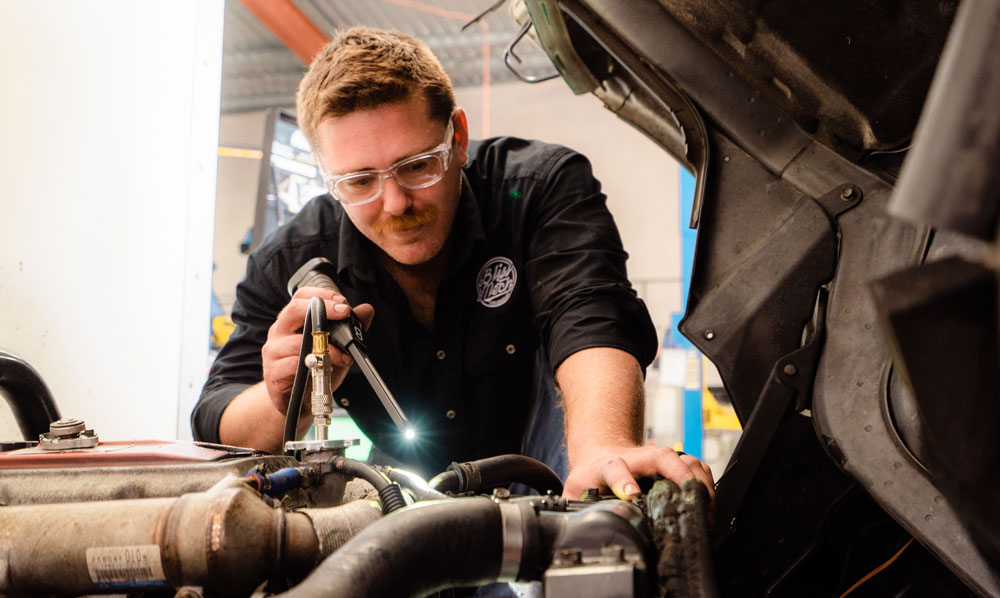
Fluid Levels: Keeping Your Engine Smooth and Responsive
Every vehicle operates smoothly thanks to a symphony of fluids working together. These fluids, often overlooked, are the unsung heroes of our daily commutes and long drives.
- Engine Oil: The lifeblood of your engine.
- Coolant: Keeps your engine from overheating.
- Brake Fluid: Essential for responsive braking.
- Power Steering Fluid: For smooth steering.
- Windscreen Washer: For clear visibility.
Each fluid plays a pivotal role in your vehicle's operation. Low or dirty fluids can lead to decreased performance and potential damage.
Brakes and Brake Pads: Your Primary Safety Measure
Your vehicle's ability to stop efficiently can be the difference between a close call and a catastrophe.
- Brake Pads: Check for wear and tear.
- Brake Discs: Should be free from deep grooves or cracks.
Regular checks ensure your brakes respond when you need them most.
Lights and Indicators: Communicating on the Road
- Headlights: For visibility during night or fog.
- Brake Lights: Informing drivers behind you.
- Indicators: Communicating turns and lane changes.
Functional lights are crucial for safety, ensuring you see and are seen by other drivers.
Battery Health: The Heartbeat of Your Vehicle
A healthy battery ensures your vehicle starts every time and powers all electronic components.
- Check for Corrosion: White, powdery deposits can hinder performance.
- Battery Life: Most last 3-5 years. Consider replacement if older.
Your vehicle's battery is its heartbeat and regular checks ensure it keeps ticking.
Signs of a Weakening Battery:
- Slow Engine Crank: When you attempt to start the vehicle, the cranking of the engine is sluggish and takes longer than usual to start.
- Check Engine Light: Sometimes, the check engine light might pop up due to a weak battery.
- Swollen Battery Case: If your battery case is bloated, it could mean the battery itself is overheating, which reduces its lifespan.
- Electrical Component Issues: Problems such as dimming headlights, power windows operating slower than usual, or the radio not working can all be signs of a deteriorating battery.
Emergency Toolkit: Prepared for the Unexpected
- First Aid Kit: For minor injuries.
- Jumper Cables: In case of a flat battery.
- Torch: For night-time emergencies.
- Basic Tools: For minor repairs.
Having an emergency toolkit can be a lifesaver, ensuring you're prepared for unexpected situations on the road.
As you prepare for your next journey, remember that a well-maintained vehicle isn't just about performance; it's about safety. Whether you're a local in Coolum heading out for a weekend getaway or a holiday maker in Coolum Beach planning a cross-country trip, these checks are essential. And if you ever need professional assistance, don't hesitate to get in touch via our contact page. At Bliss Mechanics, we're dedicated to ensuring every journey you embark on is a safe one. Safe travels!

Your car battery provides the necessary electrical energy to start your engine and keep various systems running smoothly. However, over time, it undergoes wear and tear, and its ability to hold a charge diminishes. By being aware of the signs that point to a failing battery, you can take proactive measures to replace it before it leaves you stranded on the side of the road.
Table of Contents:
- Slow Engine Crank
- Dim Headlights And Electrical Issues
- Warning Light On The Dashboard
- Frequent Need For Jump-Starts
- Age of the Battery
- Wrapping Up
1. Slow Engine Crank
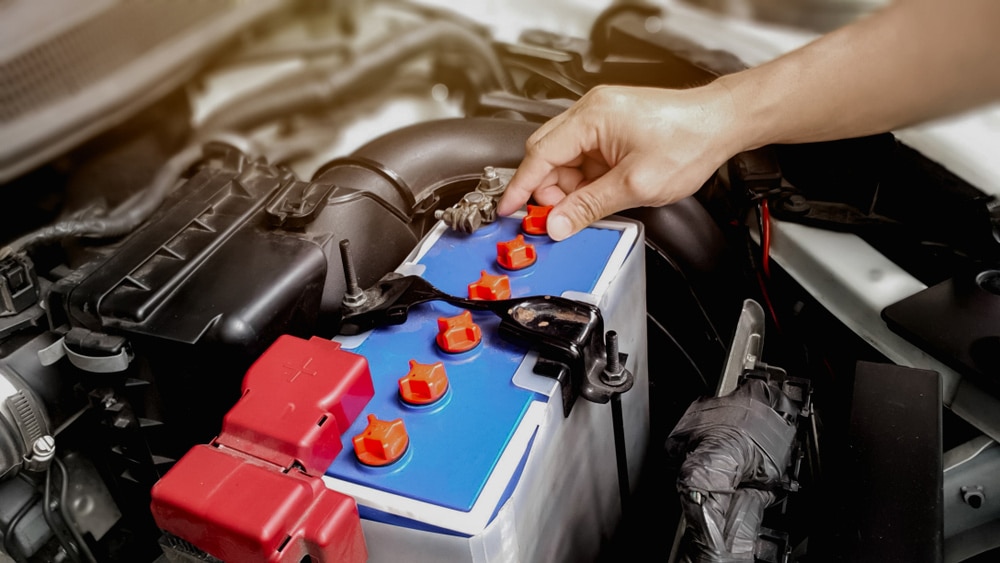
It is one of the earliest signs that your car battery is nearing the end of its life. The engine should start quickly and smoothly when you turn the key or push the ignition button. If you notice a delay or sluggishness in the cranking process, it's a sign that your battery is losing its ability to provide sufficient power.
Ignoring this symptom may leave you stranded with a car that won't start, so promptly addressing the issue is essential. Moreover, cold weather can exacerbate this problem as batteries tend to perform poorly in low temperatures.
2. Dim Headlights And Electrical Issues

If you've noticed that your headlights seem dimmer than usual or that your electrical systems, such as the radio or power windows, are experiencing glitches, it's a clear indication that your car battery is struggling. Dim headlights often occur when the battery doesn't have enough power to supply adequate electricity to the lighting system.
Additionally, electrical issues like flickering lights or erratic performance of other systems may arise due to an inconsistent power supply from the weakening battery. Sometimes electrical issues can be caused by other factors, such as faulty wiring or alternator problems. However, the battery is often the first component to check.
3. Warning Light On The Dashboard
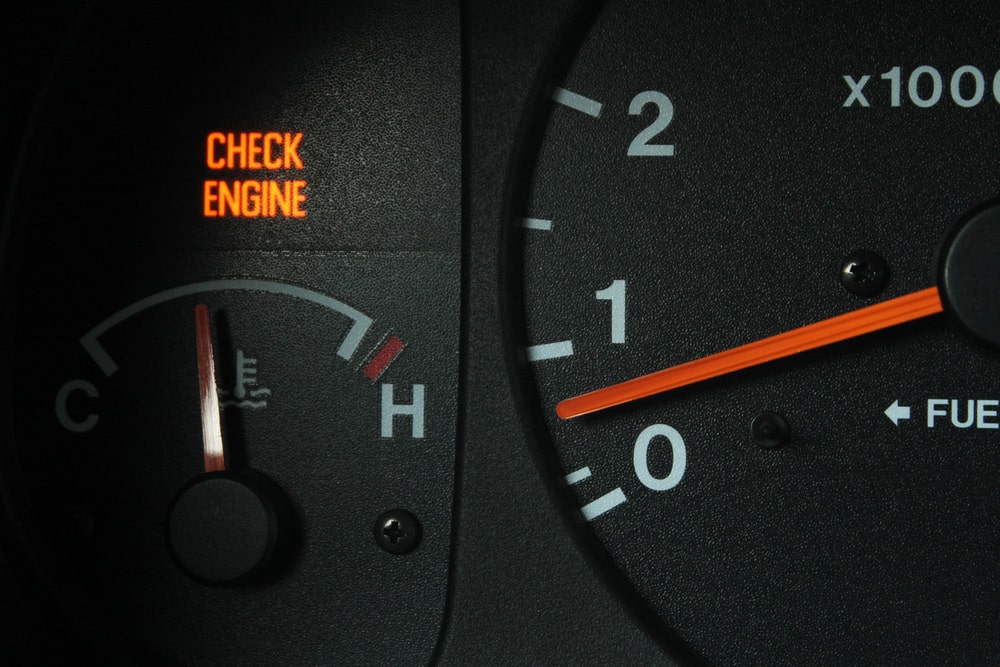
Modern vehicles are equipped with advanced systems that monitor componentry, including the battery. When your car's onboard computer detects an issue with the battery, it will illuminate a warning light on the dashboard. If you see this light, don't ignore it.
Visit a professional who can assess and determine if a car battery replacement is necessary. In some cases, the warning light may also indicate a problem with the charging system, such as a faulty alternator.
4. Frequent Need For Jump-starts
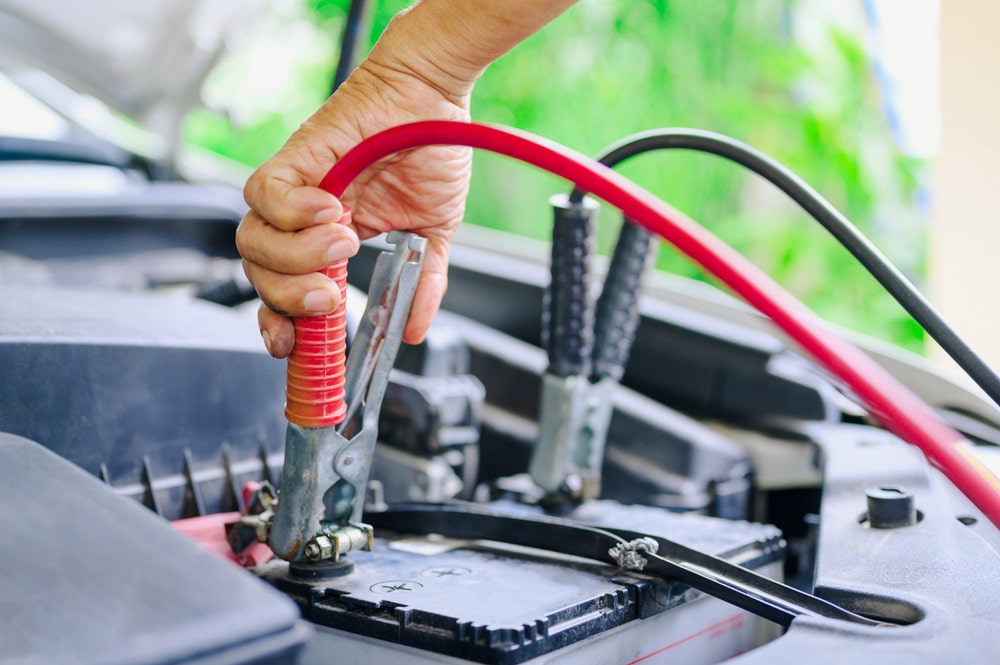
Has jump-starting your car become a regular occurrence? If so, it's a sign that your battery is no longer holding a charge effectively. While jump-starting can temporarily revive a dead battery, it's not a long-term solution. Continuously relying on jump-starting not only inconveniences you but also puts unnecessary strain on the electrical system.
Furthermore, if you've recently replaced your battery and find yourself needing jump-starts again, it might indicate a larger issue with the vehicle's electrical system or charging system. In such cases, it's advisable to have a professional inspect your car to identify the root cause of the problem.
5. Age Of The Battery
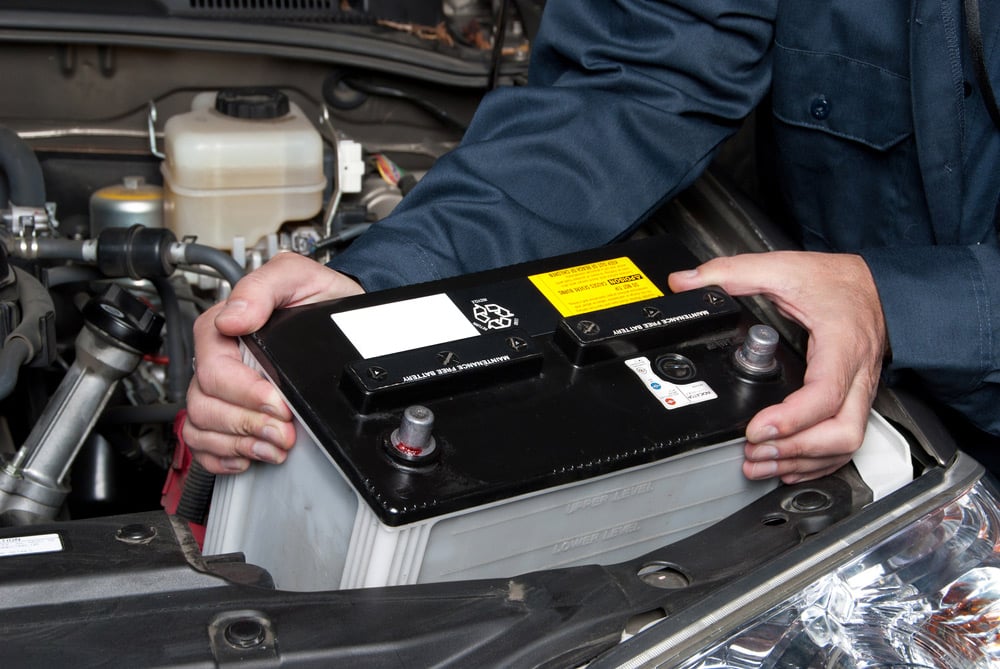
Even if you haven't noticed any specific signs of battery failure, it's crucial to consider its age. On average, car batteries last between three to five years, depending on various factors such as usage patterns, weather conditions and maintenance. If your battery is approaching or surpassing this timeframe, it's wise to consider a replacement proactively, even if it appears to be functioning adequately.
Regularly replacing your car battery before it fails can prevent unexpected breakdowns and save you from the hassle of being stranded. To determine the age of your battery, you can check the manufacturing date stamped on the battery case or ask a professional.
Wrapping Up
If you notice any of these signs, seek professional assistance to get a replacement battery for your car. At Bliss Mechanics, we are dedicated to providing prompt and cost-efficient service if you face any battery issues.
If you use your vehicle everyday, you'll want to make sure it's operating at peak performance. Fuel is the lifeblood of your vehicle so, it's important to maintain your fuel system and be aware of potential signs that things aren't quite right. In addition to regular petrol servicing, you can prevent an unexpected fuel system failure with the following steps.
Use the following links to find exactly what you're looking for in this post:
- 5 Signs you need a fuel system service
- Benefits of a fuel system service
- What's included in a fuel system service?
- The steps of a fuel system service
- How often do you replace a fuel system?
- Book a fuel replacement for your vehicle
Today, we'll run through five tell-tale signs your car needs a fuel system service. As a bonus, we'll also include an overview of what the procedure entails. Once your car has had a fuel system service, you'll be surprised how much better your vehicle runs.
5 Signs you need a fuel system service

While regular services are recommended, we understand it's easy to let these things slip by. Here are a few tell-tale signs to look out for that may indicate that your car needs a fuel system service:
- Struggles to start or starts roughly
- Your vehicle shudders when idle
- You notice your car loses power when traveling uphill or when towing
- When you press the accelerator, your engine is slow to respond.
- Slow acceleration in general
Any of the above signs, especially if you've noticed a change, is worth getting checked out by a trusted local mechanic even if it doesn't turn out to be your fuel system. Having your car serviced sooner rather than later not only gets your vehicle running better, but it can help prevent the problem from getting worse which will likely cost more to fix.
Benefits of a fuel system service

- Better engine performance: If your fuel system needs a service, you may notice your engine isn't performing at its peak. Once you have the issue sorted, you might be surprised how well your vehicle now runs.
- Increase fuel economy: It may not seem like a lot at first but consider how often you fill your car and how even a small saving each time could really add up.
- Better overall, long-term engine health: When it comes to looking after your engine, preventative measures are the preferred approach.
Not everyone will notice a difference to the performance of their car after a fuel system service, however that doesn't mean the procedure wasn't beneficial. With cars, like a lot of things, prevention is the best cure, and a service can help catch any potential issues before they become major (and expensive) problems.
What's included in a fuel system service?

As your engine burns fuel, eventually bits of residue and debris will begin to build up, causing performance issues. To solve existing performance issues and to avoid engine damage in the future, deposits will need to be removed through chemical cleaning. Deposits can occur in your fuel tank, in your fuel lines, in the fuel pump or filter and/or on your fuel injectors. The main problems which these deposits can cause are:
- Reduced fuel flow
- The blockage will cause your fuel injectors inadequately deliver fuel to your engine
- Extra stress on your fuel pumps meaning they'll wear out faster
A chemical cleaning can help improve the function and extend the life of your fuel system and help to prevent serious damage to your engine.
During a service, your mechanic will inspect various components, such as your fuel pump, fuel filter and fuel injectors. If any of these components are worn or damaged, they’ll need to be replaced to help your car perform at its best.
- Fuel Filters should be replaced around every 30,000-40,000kms or as specified by your vehicle's user manual. Some modern cars don't have removable fuel filters, so in those cases, this step won't be necessary.
- Fuel Pumps and Fuel Injectors are less likely to need to be replaced than a fuel filter, with this step only being necessary if you or your mechanic notice signs these parts are worn. A worn fuel pump will lead to hard starts and low fuel pressure. If you experience poor fuel economy and misfires, it could be a sign your fuel injectors need replacing.
The steps of a fuel system service
A fuel system service is a process that requires care from the technician, to make sure that delicate components are thoroughly cleaned while remaining undamaged. The basic outline of the process is:
- Clean the injectors
- Eliminate any fuel varnish from the throttle body
- Ensure any varnish from the valves is removed
- Replace fuel filter if necessary (some modern cars don't have removable fuel filters)
- Add fuel additive.
How often do you replace a fuel system?
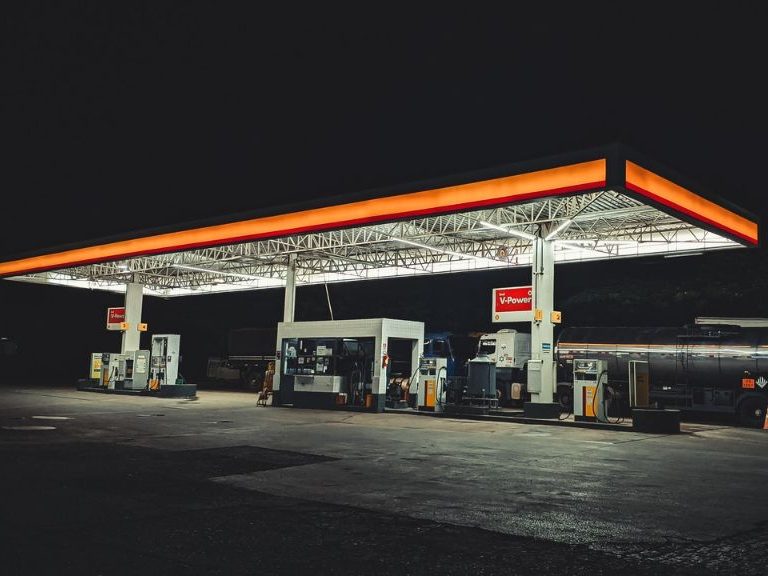
Ideally, your fuel system should be replaced every 30,000-40,000 kms depending on your vehicle and the type of driving you're doing. It's also worth looking at the user manual for your vehicle, though not all car manuals will include this information. Regular car services can help your fuel system last longer and gives your mechanic an opportunity to inspect for any issues. With their expertise, they may be able to spot potential issues before you even notice serious symptoms.
How much does replacement typically cost?
Like most repairs, prices will vary depending on the severity of the problems and the extent of the repairs. The easiest way to get an exact figure is to chat to your trusted mechanic.
With car maintenance, it's important to consider both the short term and long-term costs. Periodically servicing your fuel system can prevent damage to your engine and increase fuel efficiency, meaning it could potentially save you hundreds, if not thousands of dollars in the long run.
Book a fuel replacement for your vehicle

The best way to avoid problems with your fuel system is to book regular services with your mechanic. Services are a vital step to maintaining your car, and to spotting potential issues. If your car is due for a fuel system service or a general check-up, Bliss Mechanics is here to help!
Whether you're looking for a service, minor repairs, or something major, Bliss Mechanics are your local, go-to experts. We're passionate about getting your vehicle to its best and our friendly team are happy to help, so why not book a service or call us today at 5325 1120.
Filling your car with fuel is usually a pretty painless process (well, except for on your wallet), but what happens if you put the wrong fuel in your car? It's an easy mistake to make, especially if you're borrowing or have just purchased a new car. While it may seem like a minor thing, putting the wrong fuel in your tank is one of the most damaging things you can do to the inner workings of your vehicle.
Table of Contents:
- What are petrol and diesel?
- How are these fuels different?
- Which fuel to choose for your car
- What are the symptoms of a car with the wrong fuel?
- What are your options if the wrong fuel is in your car?
- More answers to your vehicle fuel questions
Let's run down why, what the difference between petrol and diesel is, how to know what your car takes, and what to do if you make a mistake.
What are petrol and diesel?
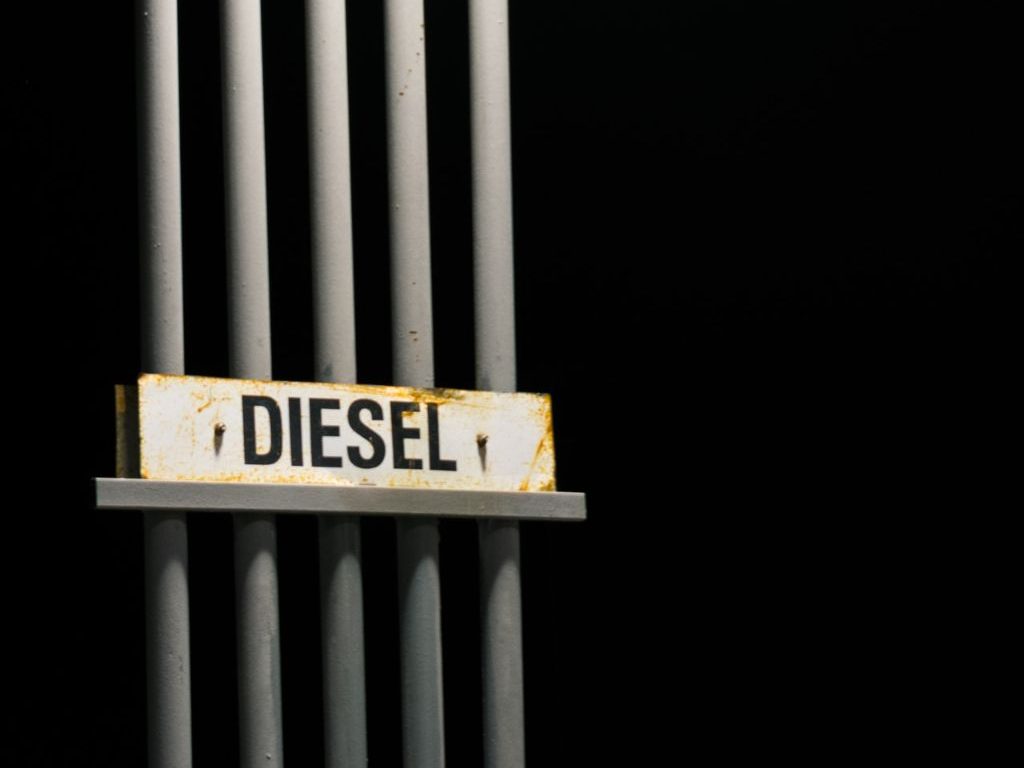
Petrol and diesel are two types of fuels that are available for different types of vehicles. The type of fuel your vehicle accepts will influence a variety of factors such as how often you need to get your vehicle serviced.
- Diesel engines can be up to 40% more efficient than petrol engines which is why they're a popular choice for transport, industry, agriculture and mining sectors.
- Petrol is much more common than diesel. Petrol engines are cheaper to make than diesel, and therefore, tend to be cheaper to buy.
How are these fuels different?
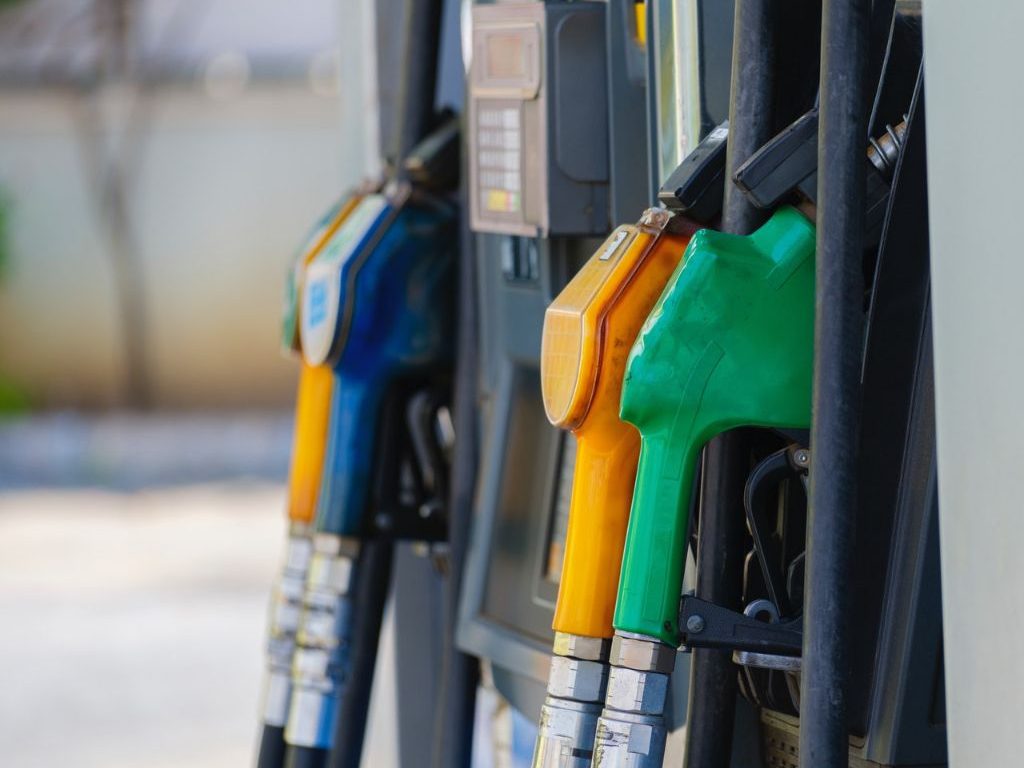
Petrol engines and diesel engines operate in different ways. In diesel engines, the air is compressed before the fuel is added, whereas in petrol engines the fuel is mixed with air inside a piston chamber, compressed by a piston and ignited by a spark plug. It's because the two engines operate in different ways that it's vital to use the right fuel for your engine.
It's also why you can cause a lot of damage to the insides of your car if you put in the wrong fuel. Running petrol through a diesel engine will reduce the lubrication properties, causing metal particles to enter the rest of the fuel system and cause significant damage.
Your mechanic will also diagnose your car differently depending on if you need a diesel fuel servicing or a petrol car servicing.
Which fuel to choose for your car

Most cars are clear on which fuel they take. This information should be included in the instruction manual and is often written on the inside of the fuel tank door. It's good idea to develop the habit of asking what fuel a car takes whenever you borrow or rent a car. If don't know, call the rental company or the person you borrowed the car from to make sure.
What are the symptoms of a car with the wrong fuel?
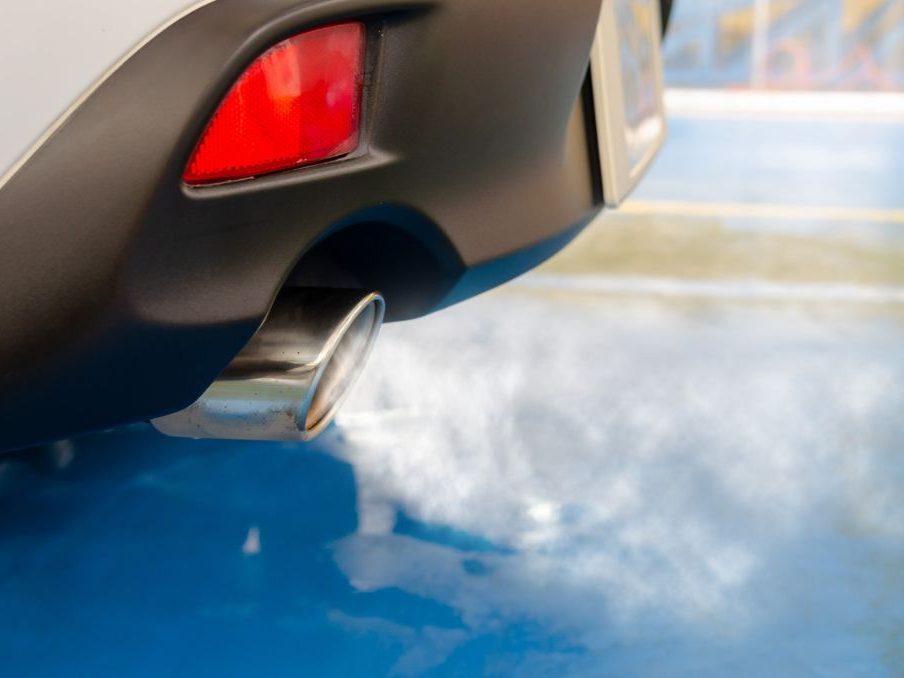
What if you aren't the one who last filled up the car? Maybe you've lent your car to someone else or a family member may be having issues with their car. Here are some symptoms to that may indicate the car has been filled with the wrong fuel:
- Engine running rough or stalling or has stopped altogether
- A loud knocking sound when accelerating
- Engine's harder to start than usual.
- Acceleration is slower than normal
- Any misfiring, pinging or backfiring.
- Your “Engine Check” has lit up.
- excessive smoke coming from your exhaust.
- your car struggling to restart.
To help narrow down the possibilities, try to pinpoint when the issues with the car. If you suspect petrol has been put into your diesel car, don't drive your car anymore.
What are your options if the wrong fuel is in your car?

If you haven't started your car yet, DON'T. Do not even put your keys in the ignition. Instead, call roadside assistance or a trustworthy local mechanic. If you know you've put in the wrong fuel, we cannot stress enough how important it is not to turn on your car. Turning on the ignition could cause permanent damage to your car and will be expensive to fix. Don't even drive your car away from the pump. Instead, put your car in neutral and find someone to help you push your car away. The one silver lining is if you've just filled your car with the wrong fuel, there will likely be someone at the service station who can help you move your car.
If you have begun driving, pull over as soon as you safely can and turn off your car's engine. Call a tow-truck and organise to have your car taken to a mechanic.
Any damage caused by using the wrong fuel won't be covered under your warranty or insurance so the expenses are going to come out of your pocket.
More answers to your vehicle fuel questions

What if it was just a little bit of the wrong fuel?
Unfortunately, diesel engines, especially newer models, are very finely engineered and even a little bit of petrol can cause engine damage. If you've put any amount of wrong fuel in you car, you'll need to have your car fixed by a professional.
Can I try to remove the fuel myself?
No. Trying to siphon out the fuel yourself can be very harmful to your health. To add salt to the wound, it's incredibly unlikely to work. Odds are there will still be traces of the wrong fuel in your car and this is still enough to damage your engine. This is a professional job to leave a qualified mechanic.
How Can I Avoid this mistake?
We often fill our car on the way to somewhere else. It's easy be thinking of work, dropping the kids off at school, the shopping you need to later, and while you're pre-occupied you accidently pick up the wrong nozzle. While filling our car may seem as second nature as putting on a seatbelt, taking a few seconds to make sure we're about to put in the right fuel could save us a whole lot of hassle in the future.
At Bliss Mechanics we pride ourselves on delivering expert service with a friendly smile. We're your one stop location for automotive services, covering everything from logbook and warranty servicing, to performance or suspension upgrades, and major and minor repairs. If you're looking for any repairs or servicing click here for a quote or give us a call on 5325 1120.
If your car is having trouble starting or the engine dies while you're driving, you may have a problem with your car battery. Battery problems are common and can be caused by various factors, including age, wear and tear, or corrosion. If you think you may have a car battery problem, it's important to diagnose and get your car battery fixed as soon as possible to avoid further damage.
Table of Contents:
- What to do if your car won't start
- What to do when your car battery dies
- How to prevent car battery problems
- The best way to charge a car battery
- How to tell if your car battery is bad
Keep reading for tips on how to troubleshoot car battery problems to get your vehicle running smoothly again.
What to do if your car won't start

If you're on the road (at the lights, for example) and your car won’t start, the most important thing is to move your vehicle to a safe place as soon as possible.
Try to diagnose what's wrong with your car or the cause of your issue because it may not necessarily be your battery. For instance, if you've been sitting in the carpark listening to the radio with the engine off, you’ll have a pretty good idea your battery is flat and why.
However, if you can operate all your electrical components, such as the headlights and the radio, it's probably not a battery issue. If you've charged your battery and it dies quickly, you likely have a problem with your alternator. However, the only sure way to know is to bring your car to your local trustworthy mechanic.
What to do when your car battery dies

If possible, try to identify the cause of your flat battery, for example, whether you left the lights on. Knowing the cause will help you or your mechanic assess how serious the problem is and what your next step should be. If you don't know or aren't sure, it's best to have your car checked by a professional.
The most common solution to a dead battery is jumping the battery. Jumper cables are a must to have in any car. You'll be glad they're there when you need them.
Keep in mind that jump starting a car can actually damage the car if done incorrectly with some modern cars. It's vital that you connect the positive cable (usually red) to the positive battery terminal and the negative cable (usually black) to the negative terminal. Doing this the wrong way round can cause serious, possibly irreparable, damage to your car. If you're not confident, call roadside assist or a friend/family member who knows what they're doing.
Do not turn off the engine immediately once you've started the car again. You should drive your car for at least 15 minutes, ideally half an hour, to give your car a chance to charge its battery. If your car struggles to start again, it's a good sign you may need to replace your battery. In addition, we'd recommend bringing in your vehicle for a check-up to ensure it isn't a problem with your alternator or another issue.
How to prevent car battery problems

1. Drive your car
One of the best things you can do for your battery is drive your car. Leaving a car to sit for too long without running the battery will drain it. Very short trips may not be enough because the alternator and engine aren't given proper time to charge the battery fully. Don't panic. A quick drive to the shop shouldn't wreck your battery. However, try to take your car for a long drive (at least thirty minutes or more) every two or three weeks to give your battery a chance to charge. If this isn't viable, consider buying an internal battery charger.
2. Switch everything off
Leaving your headlights on is probably the best-known ways to drain your battery, but there are other things you need to consider, like air-con and the radio.
Modern cars have a lot of electronics that can drain the battery if left on when the engine isn't running. This is because you're drawing power from the battery without it being able to recharge. Luckily, many modern cars have inbuilt alarms to let you know if you've left your headlights on, but it’s worth making a habit of checking everything is off before you leave your car.
3. Maintain your Battery
Good battery maintenance is the best way to avoid damage. One of the easiest ways is to have your car regularly serviced. However, there are steps you can do yourself, such as:
- Make sure battery terminals are always clean and dry.
- Keep up fluid levels but be careful not to overfill your battery
- It's recommended you use distilled water to top up your battery.
- Never leave your battery standing for long periods without being charged
- Make sure your battery is secure, as vibrations can damage the plates.
- Don't leave lights or other accessories on once the engine is off, as this will drain your battery.
- Before disconnecting your battery, read your owner's manual to ensure that you don't lose computer or radio memories
While it's impossible to avoid all battery problems, regular maintenance can keep your battery in good shape and help it last longer.
The best way to charge a car battery

When it comes to charging your battery, your best bet is to invest in a battery charger. This allows you to charge your battery from the convenience of your home. There is a range of chargers out there, and different batteries are better suited to specific chargers.
Here are a few battery charging tips:
- It's best to disconnect your battery before charging
- Ensure you connect the positive cable to the positive terminal and the negative cable to the negative terminal.
- Read your charger manual carefully before using your charger.
- Car chargers are intended to slow charge your battery over 12-24 hours. They're not designed to jump-start your car.
Unsure what battery charger to choose? Have a chat with your mechanic about what they'd recommend for your vehicle.
How to tell if your car battery is bad
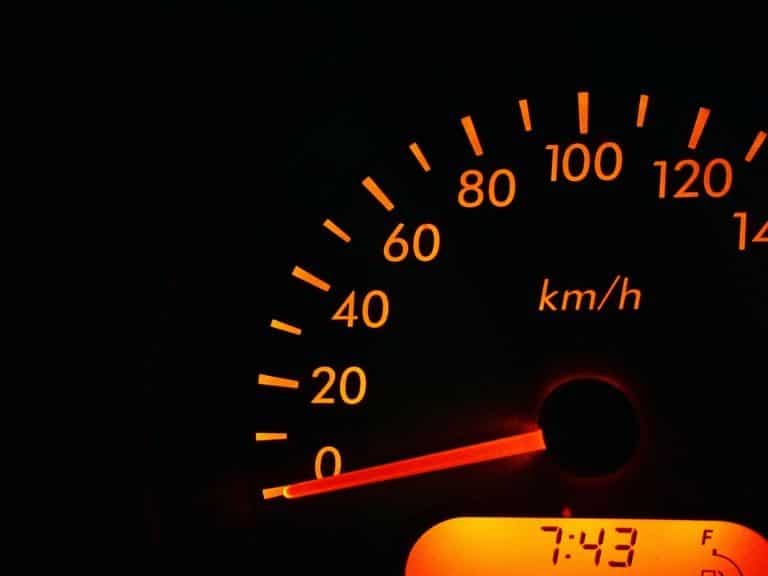
Before your car reaches the point where it won't start, a few tell-tales signs could mean your battery is on the way out. Noticing these can help you catch a problem before you're left stranded.
A clicking noise
The engine clicking over when turning on the ignition is a classic sign you have a problem related to your battery. Even if your car does eventually start, you'll want to get this looked at sooner rather than later.
Intermittent starting
If your car starts some days but not others, it’s a sign something isn’t quite right. It might be cold weather, but it could be a sign of battery problems or something more serious.
Dim lights
Have you noticed your headlights don't seem as bright as usual? It could be a sign your battery is on the way out. Whatever reason, it's worth getting to the bottom of why your lights aren't at their brightest.
Corrosion
Any corrosion on your car battery is worth investigating. This is particularly a problem for older batteries, and when the corrosion gets severe enough, it can leave your battery unable to charge. When your battery reaches this point, you'll have to replace it.
It hasn't been changed in 4+ years
Everything has an expected lifespan, and car batteries are no different. However, as mentioned above, older batteries are more susceptible to corrosion which can destroy the battery.
Have issues with your battery and not sure what to do next? Call Bliss Mechanics in Sunshine Coast, Australia at tel: 5325 1120, and our friendly team will help you out.
Regular servicing is an essential aspect of car ownership. A 6 to 12 monthly or kilometre based event - a basic or general service usually involves an oil change and inspections of the main components of the car's internal system. During your service, the mechanic will look at the brake pads, discs and callipers, the wear on the tyres, the function of the lights and other essential safety elements.
Regular petrol servicing allows an excellent opportunity for the mechanic to let you know what may need attention on your car such as potential safety hazards or issues impacting performance. This will allow you to budget for any repairs or improvements or to drive with peace of mind that your car is in top condition.
The 10 signs that your car needs a service include:
- The engine warning light is on
- Strange noises are coming from the car, such as high pitched squeals or squeaks when braking
- Smoke is coming from the exhaust or under the bonnet
- Strange vibrations are occurring as you drive
- The brakes are experiencing slower response times
- The car is stalling regularly
- You are having problems starting the car or it coughs and splutters upon starting
- The gears are grinding
- There is a decrease in the power and speed potential of the car
- The steering is pulling to one side or is very stiff
Each of these signs can indicate that something sinister is going on beneath the hood of your car or within its intricate internal systems. With a regular servicing schedule, your mechanic can often catch these problems before they occur, ensuring the safety of your vehicle and the security of your budget.
What are the different types of car servicing?

It can be difficult to know what your car needs and it can help to understand the three different types of car servicing. These include a minor service, major service and an interim service. Depending on the make, model and age of your car, you may have specific logbook servicing requirements.
Logbook servicing requirements can consist of both major and minor services and are generally conducted every 10,000 km. A logbook service will follow the procedures and recommendations in the logbook from the manufacturer of your car. It is less detailed than a major service and has specific requirements to ensure the safety and function of your car.
During a logbook service your mechanic may:
- Change the oil and install a new filter
- Check the function and adjust the brakes
- Check the steering and suspension
- Top up the fluids
- Test the battery
- Check tyre pressure, radiator hoses, fan belts and lights
These standard checks and measurements are fairly common, but some will alter between makes and models.
What happens during a major car service?
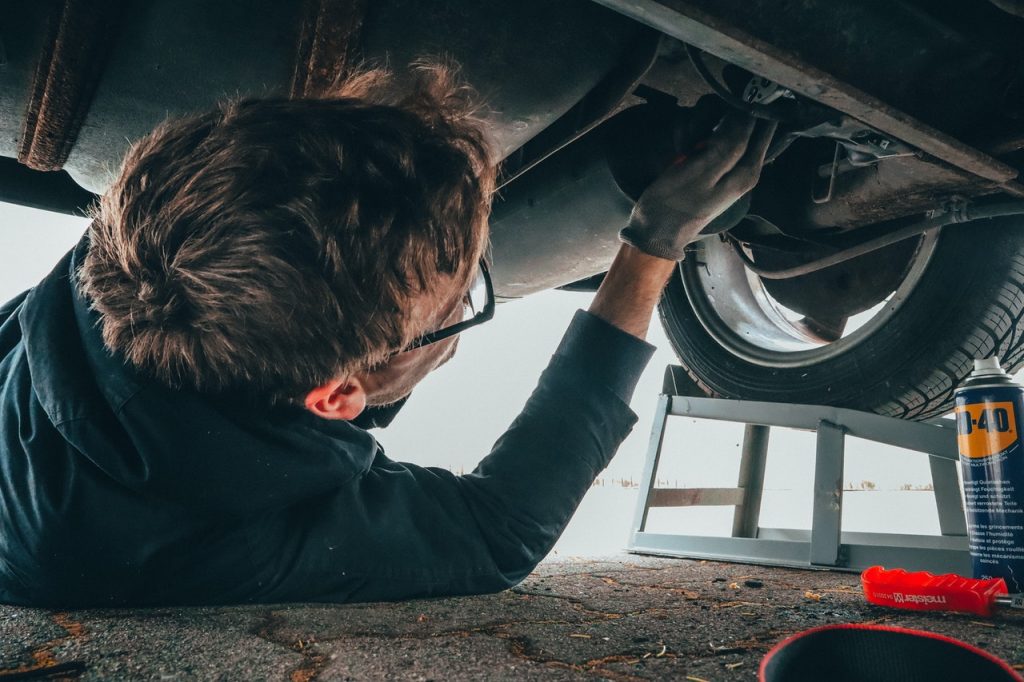
Many people put off their major service thinking interim top-ups of fluid or a casual check of the tyres is enough to maintain a car. Unfortunately, this isn't the case and major services are essential to prevent your car from needing major repairs. Major services will likely save you money in the long run, preventing major issues from popping up unexpectedly, and keeping your car in optimum condition for future sale or long term reliability.
Your major car service will generally include:
- New fresh engine oil
- Replaced spark plugs to maximise your fuel economy
- Inspection of the brakes to be cleaned and adjusted as necessary
- Flushing and replacement of fluids around the transmission, clutch, brakes and power steering
- Replacement of coolant
- A road test to see how the car is driving
- A comprehensive safety test for your peace of mind
- A battery test to ensure it is charging well and set up for long term use
- Inspection of the gear box, diff oil, wiper blades and bulbs
- Plus what you would normally expect in a basic or logbook service
Depending on the vehicle's make, model, manufacturer requirements and engine type, you should expect to do a major service around every three years or 30,000km. This is generally around the same time that your car will need new elements such as spark plugs, fuel filters and timing belts.
Some car owners fall into the trap of leaving their servicing too late or letting the period between servicing go on for too long.
Is your car overdue for a service?

In our blog post, "A Comprehensive Lowdown on Car Servicing", we discuss how a regular car service can save you time, money and potential risk across the life of your car. Being able to identify potential problems before they become major issues is an asset that only a qualified and experienced mechanic can provide. Servicing performed by a trusted mechanic can ensure all essential checks are completed so vital elements don't let you down when you need them the most.
Many people put off their car service in an attempt to save money, however, this provides a false sense of security as the cost of repairs can far outweigh the cost of servicing on a neglected car. Servicing can improve the fuel economy of your car and make it more reliable on the road with a smoother running engine and more responsive elements. If you're planning on selling your vehicle down the line, a regular servicing history performed by a qualified and experienced mechanic can add thousands to your sale price and help your car sell faster.
You can trust the Bliss Mechanics team to perform your servicing to the highest standard. We are committed to working with honesty, integrity and quality to bring the highest performance and reliability to your vehicle. We understand that your car is needed to keep your day to day life running well, and our quick turnarounds provide the perfect solution. Whether you need a major service after years of neglect, or you're looking for someone to keep your car on a regular servicing schedule, we can help.
Our extensive knowledge in both petrol and diesel car servicing can keep your car running smoothly and safely so you can travel with peace of mind. For more information on our petrol servicing or give us a call on 5325 1120 to book your car in today.
Everything you need to know about your car’s engine oil.
Engine oil is designed to be used and replaced. It’s not a part of your car that you put in and leave, it is a consumable that can run out. The levels in your car and quality reduce over time, and this makes checking and changing your oil extremely important, whether you're servicing a diesel or petrol vehicle.
In fact, checking your oil is one of the most important maintenance practices you can do yourself to prevent internal engine damage and maintain your car in-between visits to the mechanic.
Your car needs oil
Oil lubricates and protects the valves, pistons and other parts that operate at high speeds inside your engine. It helps keep them cool and running efficiently. Changing your oil regularly protects your engine and could save you a very big repair bill later. Your owner's manual will recommend kilometre milestones for car services where your oil should be changed at a minimum. Despite servicing, you should still be checking your oil regularly in case it needs to be changed earlier.

How often should you check your oil?
We recommend checking your engine oil every two weeks. Check both the colour and the consistency. It doesn’t take very long and is just a quick test with the dipstick and a rag. Oil is a critical component in your car so it’s wise to keep an eye on its levels.
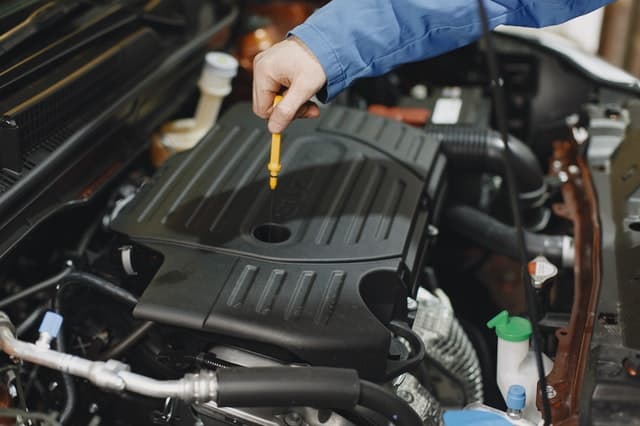
How do you know if your oil needs to be changed?
Your car’s oil should be a rich, amber colour and within the levels indicated on the dipstick. If the colour has changed significantly, it is time to consider an oil change. Fixing the problem now could potentially save you thousands later on.
How do I check my car oil?
Checking your car oil is a quick and easy thing to do.
- Park your car somewhere level. If the car is on an angle, you will get an inaccurate reading.
- Wait 20-30minutes after driving to check the levels so that all the oil has drained into the pan.
- Locate the oil dipstick. Often it has a yellow or orange handle and usually has an oil can symbol on it.
- Clean the dipstick. Don’t read the dipstick based on the first time you pull it out. Use an old rag or cloth to wipe it, insert it back in and read it the second time you pull it out to ensure a clear and accurate reading.
- The dipstick will have markers on it for you to read whether it is in the right range.
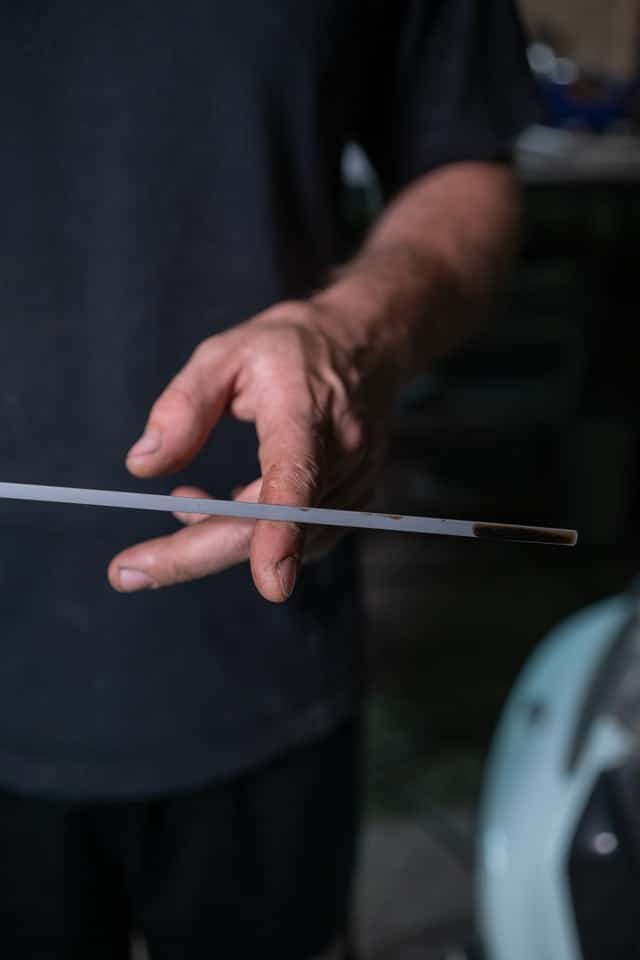
What can cause the need for an early oil change?
Normal regular car servicing is often enough for most vehicles’ engine oil changing needs. There are some things, however, that can cause you to need one earlier. Factors that influence your oil consumption and quality include:
• The amount of driving you do
• Driving in dusty conditions
• Lots of driving on gravel, unsealed, dusty roads
• Driving regularly in heavy, stop-start traffic
• Lots of steep uphill and downhill driving
Your car will also likely use more oil if your engine is older or if you use lower quality oil. Worn seals, gaskets and piston rings can also cause your car to consume more oil.

What if you don't drive your car that often? How often would you then change your oil?
It can be easy to think that if you don't drive your car a lot then you shouldn’t need to change the oil as often, but that is not the case. Oil has a lifespan. To keep your engine running optimally, all cars need their oil levels checked and replaced regularly, regardless of their mileage.
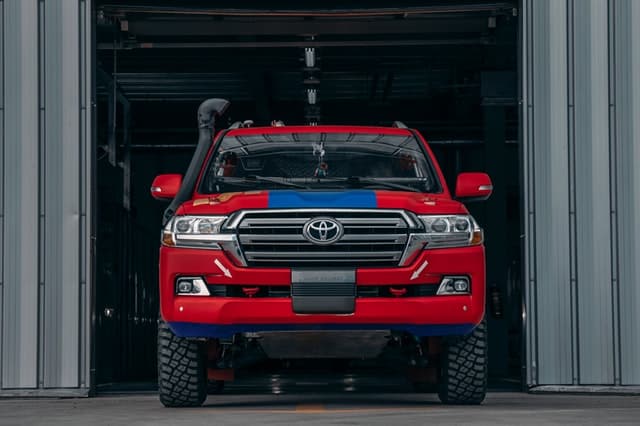
Can I change the oil myself?
A good mechanic will always be happy to check and change your oil for you, and this is done as a standard part of your car’s scheduled servicing. If you enjoy getting your hands dirty, however, you can do this yourself.
While it’s not an overly complicated procedure, it can be quite messy – especially if you don’t have the right tools and equipment. Furthermore, given that the oil is such a critical part of your car’s ability to function, you must be confident and know what you are doing. If not, you could do more damage than good.

How do I change my engine oil?
To save yourself time and mess, we highly recommend seeing a mechanic. This is a simple and generally quick procedure with our professional car lift equipment and garage setup. Without it, you could end up with a huge clean up afterwards.
If you still want to give it a go, it’s worth having a mechanic or a car-savvy friend who knows what they are doing help you with the first one. It’s not something you want to get wrong. A simple mistake like not putting the plug back in properly can mean leaking oil and running without it will damage to your car.
Want help?
Knowing how to check your oil is an important life skill, however, changing your oil yourself is not everyone’s cup of tea. As you can see, it can be quite an involved process. Mechanics do oil changes regularly, and if you are concerned that yours needs attention, give us a call or come in and see us at our Coolum workshop. Our team of friendly expert mechanics will help take care of your car and keep it running well.
If you’re in the market for a new car, chances are you’ve heard of the four main types of engines – petrol, diesel, hybrid and electric. Most secondhand cars are petrol or diesel as the other two are quite new to the market and harder to source. When deciding on which type of car to buy, it’s important to consider the long-term running and maintenance costs of your potential car to make sure you can afford its upkeep.
When it comes to servicing – there is little more you can do for your car to improve its lifespan, running costs and quality of use. All cars should be serviced regularly, around every six months, whether brand new or 20 years old. A maintained servicing schedule will ensure the car runs how it should, with all components kept well-oiled, cooled and lubricated. A well-maintained engine will encounter fewer running issues and keep you safer on the roads overall. The cost of a service will generally depend on the individual mechanic or manufacturer specifications, but the fuel type can also have a small impact.
The type of servicing for a petrol vehicle vs that of a diesel is different in some ways, yet a diesel car runs and is maintained much the same as a petrol-fuelled car and, in fact, is generally less complicated. A diesel system has no ignition process, removing an entire section of the servicing process which would usually require careful attention. However, in a diesel car, it is vital that the fuel that passes through the injector pumps and injectors is always clean and the filters are regularly changed over. Otherwise, unless your diesel car requires an idle speed reset, the servicing protocol will be much the same, generally including:
- Basic Car Safety Check
Seatbelt tension check, external lights check, handbrake function, ensure mirrors and windscreens aren’t cracked, check wiper blades, ensure the horn is working, check fluids and tyres
- Fluids Top Up
Top-up engine oil, coolant, brake fluid, power steering fluid, windscreen washer fluid, clutch fluid for manual cars, gearbox oil, and differential fluid.
- Tyres Check
Check tyre pressure, tread depth, and the health of the spare tyre, plus the car jack and tools.
- Lights Check
Ensure the headlights, indicators, brake, reverse, and parking lights are in working order.
- Additional Items
Check radiator hoses for leaks or cracks, ensure the engine air filter is clean, look for corrosion around the battery, listen for strange sounds, and ensure that fan belts are secure.
The servicing protocol for any vehicle is tailored to suit the vehicle in question, and a good mechanic will know what to look and listen for the second you present with your vehicle, whether it is petrol or diesel. Some diesel cars have larger filters than others, and some petrol vehicles have manufacturer-specific items that need to be looked over.
When it comes to the care of your car, prevention is always better than a cure, and for diesel cars in particular – the cost of neglect can be enough to send the car to early retirement. Alternatively, if cared for, a diesel engine can have an incredibly long and reliable working life. No matter what kind of engine you drive, the need to maintain healthy spark plugs, brake pads, fluids and tyres is never diminished. If you’re driving with broken lights or bald tyres – there is a risk to both your safety and your license, with the police looking out for these issues on the roads 24/7.
In considering your next car purchase, don’t fall into the trap of thinking some cars will need less servicing than others. When it comes to petrol vs diesel cars, there is little difference in their need for regular attention and check-ups. Some will need specific checks depending on manufacturing or insurance requirements, while others will have larger filters or idle speeds that are prone to fluctuation. If you’re concerned about the servicing requirements for your new vehicle, or if you want to find out more about how we can help, click here for more information on vehicle servicing. Having your mechanic on speed dial will put you well ahead of the game when it comes to keeping your vehicle running for years to come.